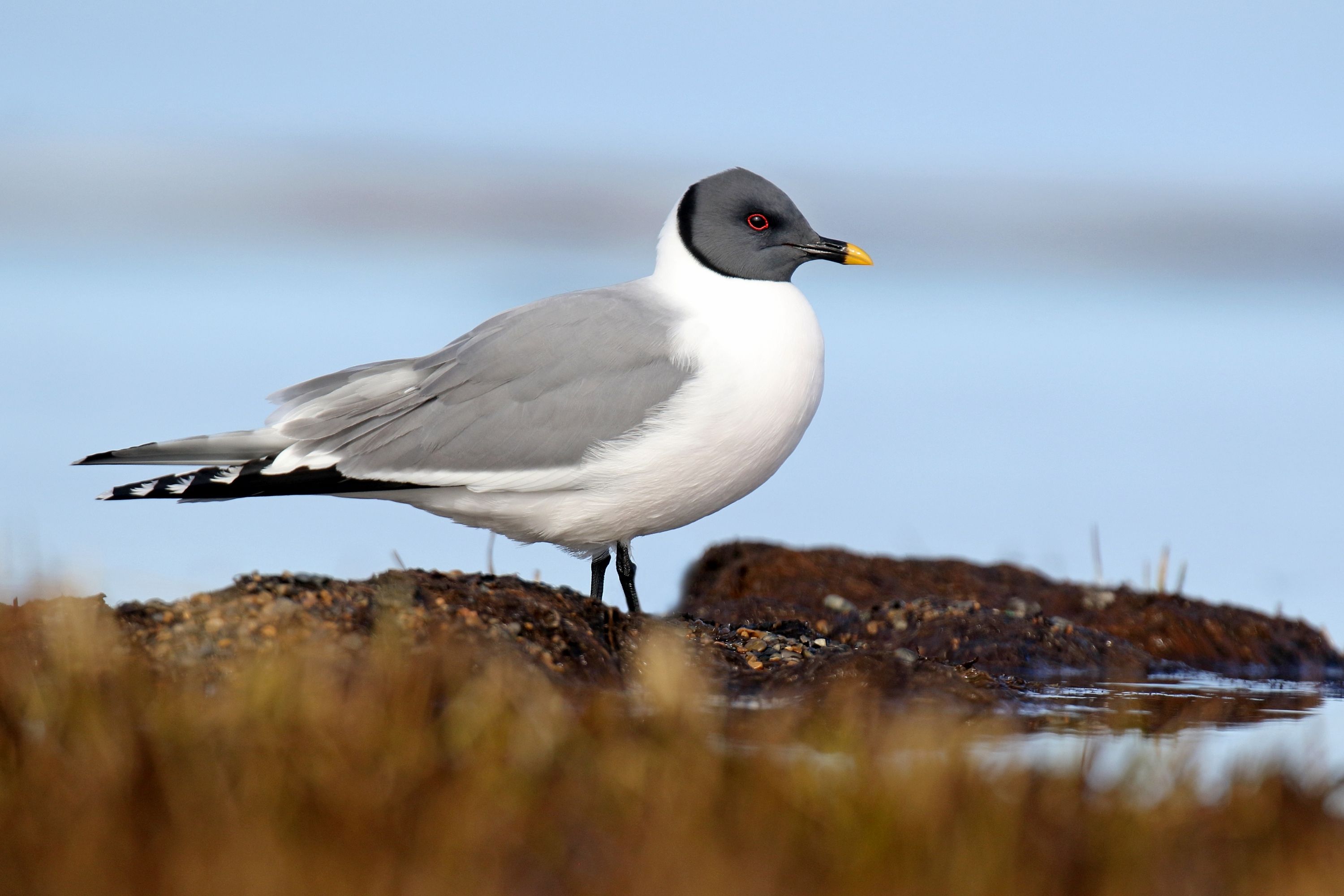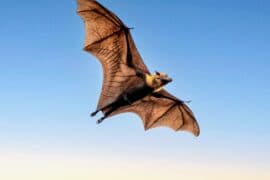Sabine's gull
(Xema sabini)

Description
Sabine's gull (Xema sabini) also known as the fork-tailed gull or xeme, is a small gull. It is the only species placed in the genus Xema. It breeds in colonies on coasts and tundra, laying two or three spotted olive-brown eggs in a ground nest lined with grass. Sabine's gull is pelagic outside the breeding season. It takes a wide variety of mainly animal food, and will eat any suitable small prey. The Sabine's gull is a small gull, 27 to 33 cm (10+1⁄2–13 in) in length and weighing 135 to 225 g (4+3⁄4–7+15⁄16 oz). The wings are long, thin and pointed with a span of between 81 to 87 cm (32–34+1⁄2 in). The bill, which is black with a yellow tip, is around 2.5 cm (1 in) long. This species is easy to identify through its striking wing pattern. The adult has a pale grey back and wing coverts, black primary flight feathers and white secondaries. The white tail is forked. The male's hood darkens during breeding season. Young birds have a similar tricoloured wing pattern, but the grey is replaced by brown, and the tail has a black terminal band. Juveniles take two years to attain full adult plumage. Sabine's gulls have an unusual molt pattern for gulls. Fledged birds retain their juvenile plumage through the autumn and do not start molting into their first winter plumage until they have reached their wintering grounds. Adults have their complete molt in the spring prior to the spring migration, and have a partial molt in the autumn after returning to the wintering area, a reversal of the usual pattern for gulls. They have a very high-pitched and squeaking call. It breeds in the Arctic and has a circumpolar distribution through northernmost North America and Eurasia. It migrates south in autumn; most of the population winters at sea in the Pacific off western South America in the cold waters of the Humboldt Current, while Greenland and eastern Canadian birds cross the Atlantic by way of the westernmost fringes of Europe to winter off southwest Africa in the cold waters of the Benguela Current. Occasionally individual Sabine's gulls can be seen off other coasts such as the northeastern United States or further east in Europe, typically following autumn storms. It is recorded often enough inland in North America, Europe, and even Siberia, that it has been said to exhibit "cross-continental migration" in addition to migration at sea. The diet and feeding technique of the Sabine's gull varies by season and habitat.
Taxonomic tree:







